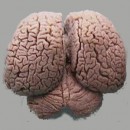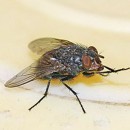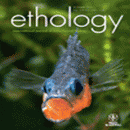My Master’s Thesis (1979)
For my thesis, I investigated the feeding behavior of the common garter snake, Thamnophis sirtalis sirtalis, in the laboratories of Gordon Burghardt at the University of Tennessee in Knoxville.
Read MoreMoving Prey Attracts Snakes (1977)
Chemical cues are of great importance-in the food-finding behavior of snakes. However, visual cues may direct the attacks of foraging snakes, especially if the snakes have been alerted by olfactory cues. In the present experiments, testing chambers were saturated with prey odor, after which movement of prey objects of a constant size was varied quantitatively across a wide range of speeds.
Read MoreStereotypic Behavior in Persons with Mental Retardation (1994)
In children and adults with mental retardation, and particularly in those who are severely or profoundly impaired, stereotyped behaviors are very common. Special educators do not typically get to watch the origin of these behaviors; rather, they are often confronted with well-developed behaviors which appear to be nonfunctional and can occur with such great frequency as to make training difficult.
Read MoreThe Ability of Mentally Retarded Persons To Judge Facial Expressions From Photographs (1986)
Read MoreThe Ability of Mentally Retarded Adults to Judge Facial Expressions From Photographs (1983)
The ability of mentally retarded persons to recognize facial expressions is not well known. In the present study, Carroll Izard’s photo recognition technique was applied to a sample of institutionalized mentally retarded adults, with their responses compared to those of nonretarded adults to determine: 1) if retarded adults can identity emotive facial expressions, and, 2) which expressions they can best recognize.
Read MoreNormal and Abnormal Stereotyped Behaviors in Humans and Infrahumans (1986)
All vertebrates exhibit rhythmic, repetitive behaviors. Some of these behaviors are normal and functional, but others are abnormal and non-functional. When the behaviors are abnormal, they are called stereotypies. Studies of normal rhythmic behaviors and abnormal stereotypies in both human and non-human animals are discussed. The importance of comparing normal and abnormal rhythmic behaviors in both human and non-human animals is stressed.
Read MoreA Look At Some Abilities Which Are Similar In Humans And Nonhumans (1986)
Homo sapiens shares with other mammals many basic aspects of brain functioning. While our brains of course have specific adaptations which reflect our cognitive and language abilities, the basic mammalian plan is present, and learning, memory, and perhaps cognition are only quantitatively different from other mammals. Many of our abilities may be relatively independent of our much-touted intelligence. This paper will present a discussion of cognitive and language abilities in non-human animals, and will conclude with some speculations about some areas of functioning which do not require high intelligence, yet which are quite complex.
Read MorePair Bonding and Sexual Division of Labor (1976)
To what extent behavior is hereditary and to what extent it is learned will probably always be an unresolved problem, but I have been convinced from studying animal behavior that nature plays an important part in behavior. Pair-bonding and sexual division of labor almost certainly have hereditary components.
Read MorePreening Behaviors of Flies (1984)
Casual observation of the common housefly, Musca domestica or of related species will reveal that these insects spend a good deal of their time in preening movements. Although there is some evidence that preening has functions other than cleaning, the terms preening, grooming, and cleaning have been used interchangeably in the literature, and will be so in this paper.
Read MoreThe Well-Groomed Fly (1977)
Jed was primarily interested in the sequencing of the grooming movements, but I found myself wondering if the purpose was to keep the body clean. To that end I put a fly in a petri dish, covered it with a dollop of flour I had brought from home, waited a couple of days, and looked at them under a microscope.
Read MoreEffects of Prey Movement and Prey Odor on Feeding in Garter Snakes (1983)
This paper, published in the German ethology journal Zeitscrhift fürTierpsychologie, is based upon my master’s thesis at the University of Tennessee. I volunteered second authorship to my advisor, Gordon Burghardt, because he put in considerable work on the published version.
Read MoreNew Regulations for the Treatment of Animals in Behavioral Research: Their Significance for the Treatment of Individuals with Disabilities (1987)
In recent years there has been considerable controversy regarding “Baby Doe” cases in which a disabled infant is allowed to expire from want of food and water. This has been ethically justified by classifying food and water as “treatments” and then withholding treatment . Such a procedure would be both unethical and illegal under current guidelines and regulations for the treatment of animals
Read MoreEffect of Tongue Removal on the Feeding of an Adult Garter Snake, Thamnophis Sirtalis (1977).
In my first year in an experimental psychology graduate program at the University of Tennessee Dr. Gordon Burghardt gave me and another first-year student a pair of precision Japanese motors and told us to do something with them. From that came several journal articles and my master’s thesis.
Read MoreThe Strange Case of Mimicry in the New World Coral Snakes: A Review (1985)
This paper reviews the theoretical and empirical contributions to the literature of coral snake coloration and examines the plausibility of the various proposed causal mechanisms. Natural selection operating on predators is proposed as the mechanism which is most likely to be responsible for the evolution of and maintenance of coral snake mimicry.
Read MoreA Discussion of Stereotypic Behavior in Normal Infants And Developmentally Delayed Individuals (1985)
This paper defines stereotypic, or rhythmic, behavior. The stereotypies of normally developing infants are discussed and compared with the stereotypies of institutionalized individuals with developmental delays. Animal studies are cited, where relevant.
Read More








